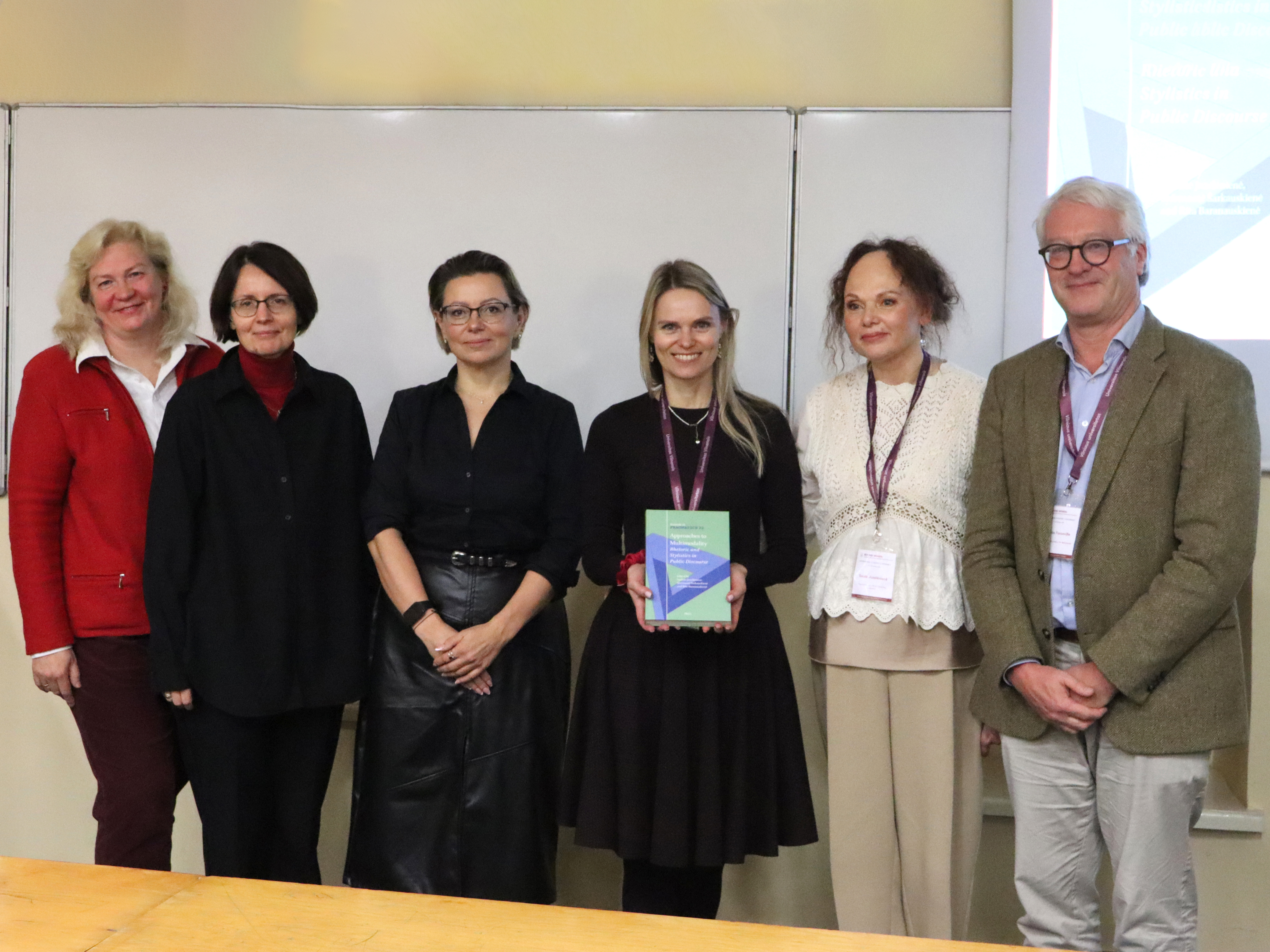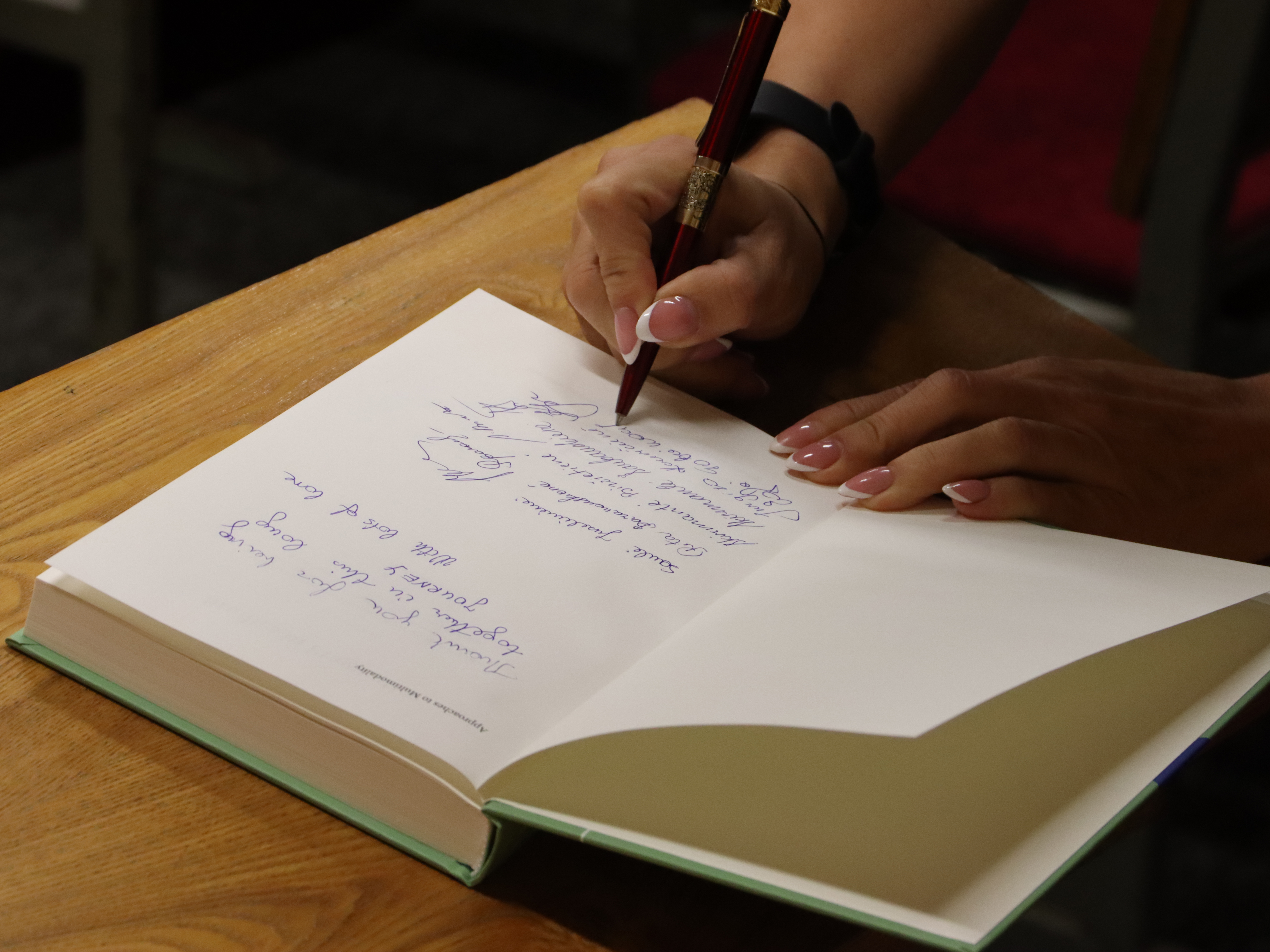 On 25 October, 2024, on the second day of the international scientific conference "Beyond Words: Persuasive Narratives and Multimodal Discourse", the monograph "Approaches to Multimodality: Rhetoric and Stylistics in Public Discourse" was presented to Vilnius University Kaunas Faculty community and the conference participants.
On 25 October, 2024, on the second day of the international scientific conference "Beyond Words: Persuasive Narratives and Multimodal Discourse", the monograph "Approaches to Multimodality: Rhetoric and Stylistics in Public Discourse" was presented to Vilnius University Kaunas Faculty community and the conference participants.
This volume was prepared by the research group "Multimodality in Public Discourse", working at the Institute of Languages, Literature and Translation Studies of Vilnius University Kaunas Faculty. The members of this research group are Assoc. Prof. Dr Saulutė Juzelėnienė, Assoc. Prof. Dr Skirmantė Šarkauskienė, Assoc. Prof. Dr Rita Baranauskienė, Assoc. Prof. Dr Eglė Gabrėnaitė, Assoc. Prof. Dr Skirmantė Biržietienė, and Assoc. Prof. Dr Jurgita Kerevičienė. The monograph was edited by Assoc. Prof. Dr Saulutė Juzelėnienė, Assoc. Prof. Dr Skirmantė Šarkauskienė and Assoc. Prof. Dr Rita Baranauskienė and published by the internationally renowned publishing house Brill (https://brill.com/display/title/69417).
The authors of the volume describe their long and meticulously prepared scientific work using the metaphor of a journey full of successfully overcome challenges.
One of the inspirers of the monograph, Charles Forceville, Professor of Media Studies at the University of Amsterdam, was pleased to personally congratulate the authors and thank them for their contribution to the research in multimodality field.
Charles Forceville called the book a vade mecum for scholars and students researching visual and multimodal stylistics, rhetoric, and creativity across diverse media, and for professionals working in the fields of advertising, commercials, film production etc.
"This book is unique because it is of interest to multimodality scholars around the world as it offers an invaluable, “non-English” perspective of analysis, focusing on Lithuanian public discourse," says professor Charles Forceville.
"I hope that this monograph will find a worldwide readership with an interest in multimodal stylistics and persuasion," says Forceville, inviting to read the book for original insights that encourage cross-cultural comparative research, highlight the role of the cultural context in multimodality, and assess the interplay between multi-modal communication and (sub-)cultural influences in political, advertising and cinematic discourse.
 The book focuses on the rhetoric of promise and threat in local political discourse, and on argumentation schemes in social issue advertising. Furthermore, the authors also research visual and multimodal tropes – metaphor, metonymy, hyperbole, oxymoron and irony – in social issue advertising. Two chapters discuss multimodal metaphors in video and print advertisements promoting alcoholic beverages. The book concludes with the analysis of the colour shifting complemented by changes in sound and music as the transformation of emotions in Soderbergh and Ross' film Pleasantville (1998).
The book focuses on the rhetoric of promise and threat in local political discourse, and on argumentation schemes in social issue advertising. Furthermore, the authors also research visual and multimodal tropes – metaphor, metonymy, hyperbole, oxymoron and irony – in social issue advertising. Two chapters discuss multimodal metaphors in video and print advertisements promoting alcoholic beverages. The book concludes with the analysis of the colour shifting complemented by changes in sound and music as the transformation of emotions in Soderbergh and Ross' film Pleasantville (1998).
The authors thanked Daiva Aliūkaitė, Vice Dean of Academic Affairs, for encouraging them to bring together the work of the research group into a scholarly resource, in which the analysis of political, advertising, and cinematic discourse adds a significant contribution to the study of visual and multimodal communication by applying the theoretical and methodological approaches of both classical and contemporary rhetoric and stylistics.